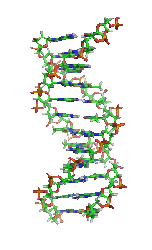The newly identified gene is found in modern-day humans, Neandertals and Denisovans, but not in chimps
New research suggests that a single gene may be responsible for the large number of neurons found uniquely in the human brain. When this gene was inserted in the brain of a mouse embryo (shown here), it induced the formation of many more neurons (stained red). The extra neurons led to the formation of characteristic convolutions that the human brain uses to pack so much brain tissue into a small space (convolutions shown on the right). Credit: Marta Florio and Wieland B. Huttner, Max Planck Institute of Molecular Cell Biology and Genetics
A single gene may have paved the way for the rise of human intelligence by dramatically increasing the number of brain cells found in a key brain region.
This gene seems to be uniquely human: It is found in modern-day humans, Neanderthals and another branch of extinct humans called Denisovans, but not in chimpanzees.
By allowing the brain region called the neocortex to contain many more neurons, the tiny snippet of DNA may have laid the foundation for the human brain's massive expansion.
"It is so cool that one tiny gene alone may suffice to affect the phenotype of the stem cells, which contributed the most to the expansion of the neocortex," said study lead author Marta Florio, a doctoral candidate in molecular and cellular biology and genetics at the Max Planck Institute of Molecular Cell Biology and Genetics in Dresden, Germany. Still, it's likely this gene is just one of many genetic changes that make human cognition special, Florio said.
An expanding brain
The evolution from primitive apes to humans with complex language and culture has taken millions of years. Some 3.8 million ago, Australopithecus afarensis, the species typified by the iconic early human ancestor fossil Lucy, had a brain that was less than 30 cubic inches (500 cubic centimeters) in volume, or about a third the size of the modern human brain. By about 1.8 million years ago, Homo erectus was equipped with a brain that was roughly twice as big as that of Australopithecus. H. erectus also showed evidence of tool and fire use and more complex social groups.
Once anatomically modern humans, and their lost cousins the Neanderthals and Denisovans, arrived on the scene, the brain had expanded to roughly 85 cubic inches (1.4 liters) in volume. Most of this growth occurred in a brain region called the neocortex.
"The neocortex is so interesting because that's the seat of cognitive abilities, which, in a way, make us human like language and logical thinking," Florio told Live Science.
See original here:
"Big Brain" Gene Allowed for Evolutionary Expansion of Human Neocortex
